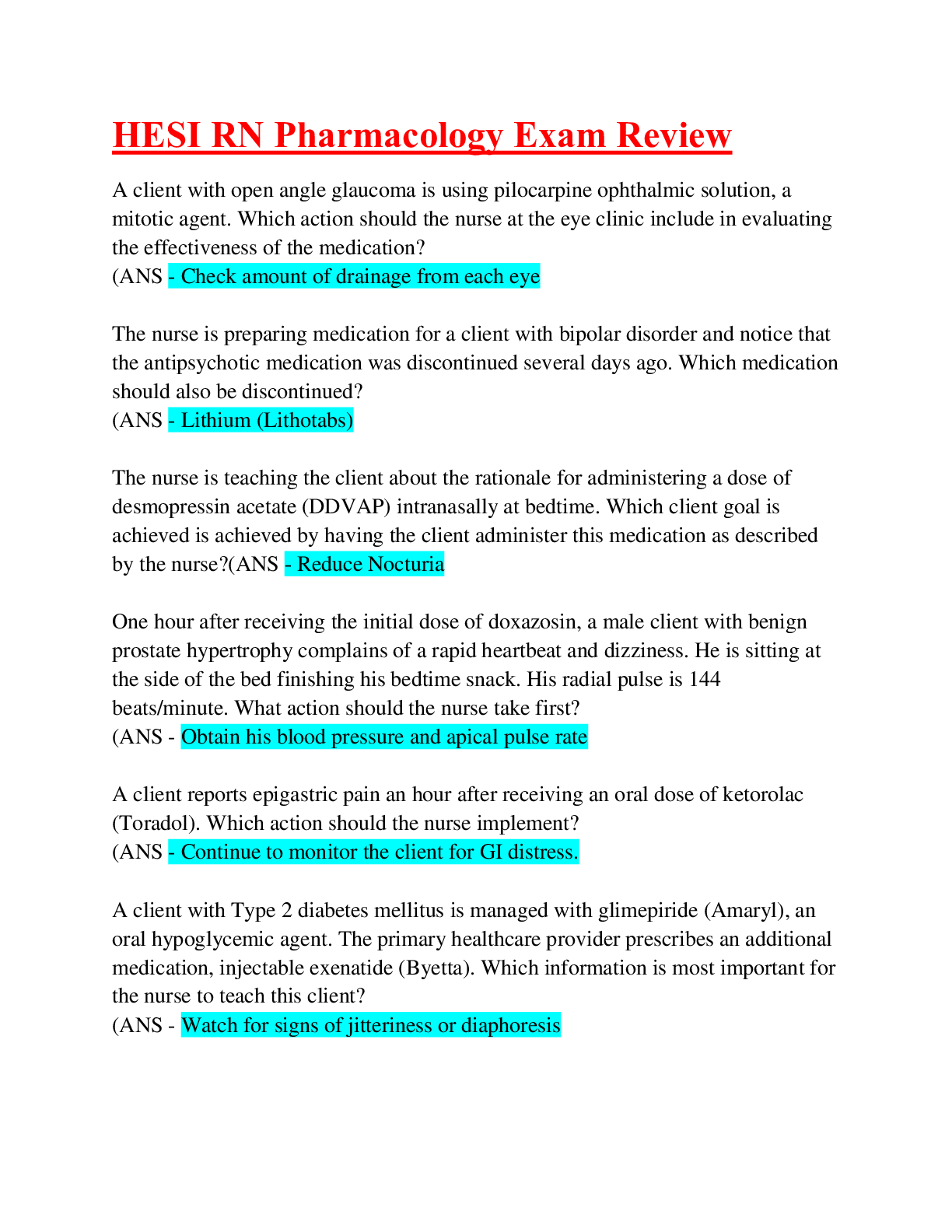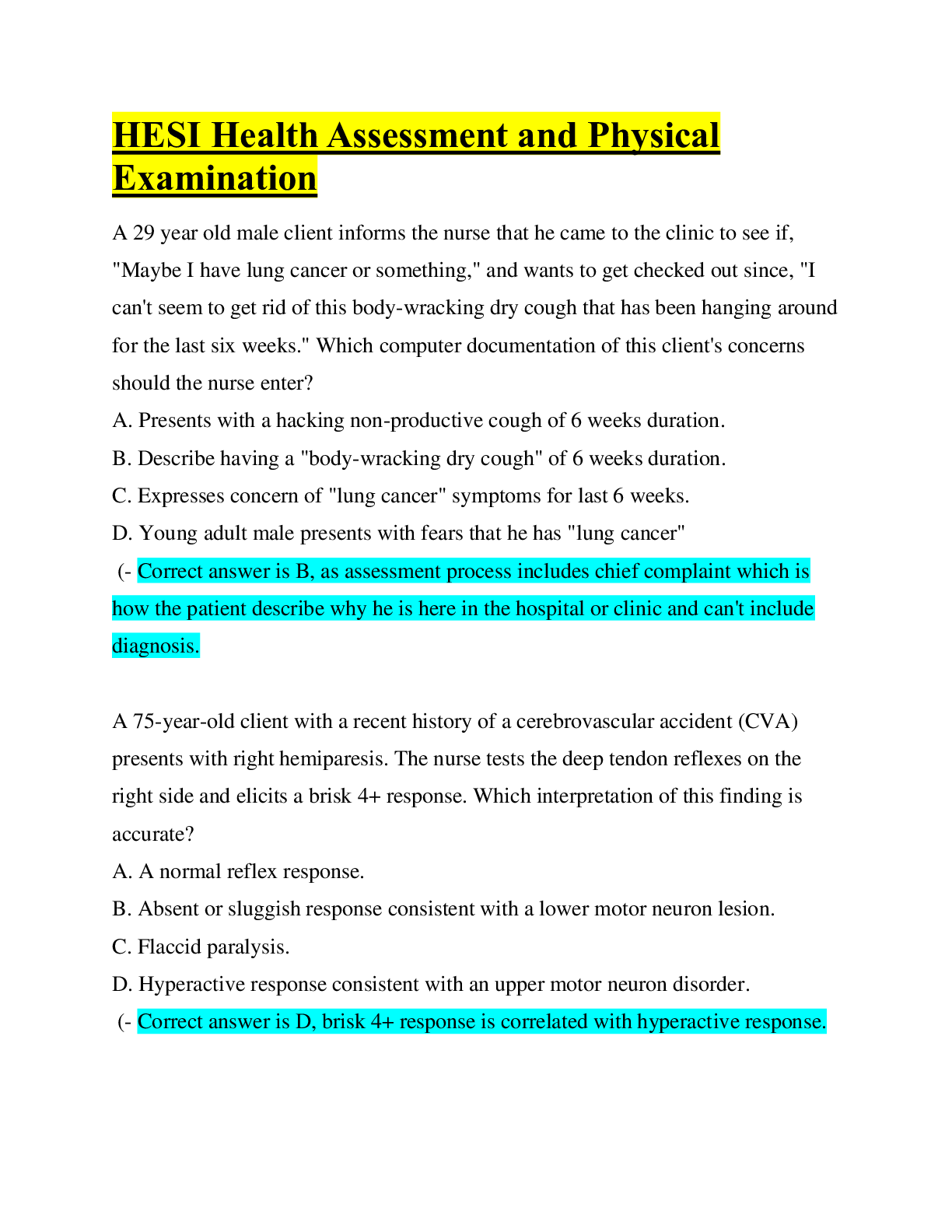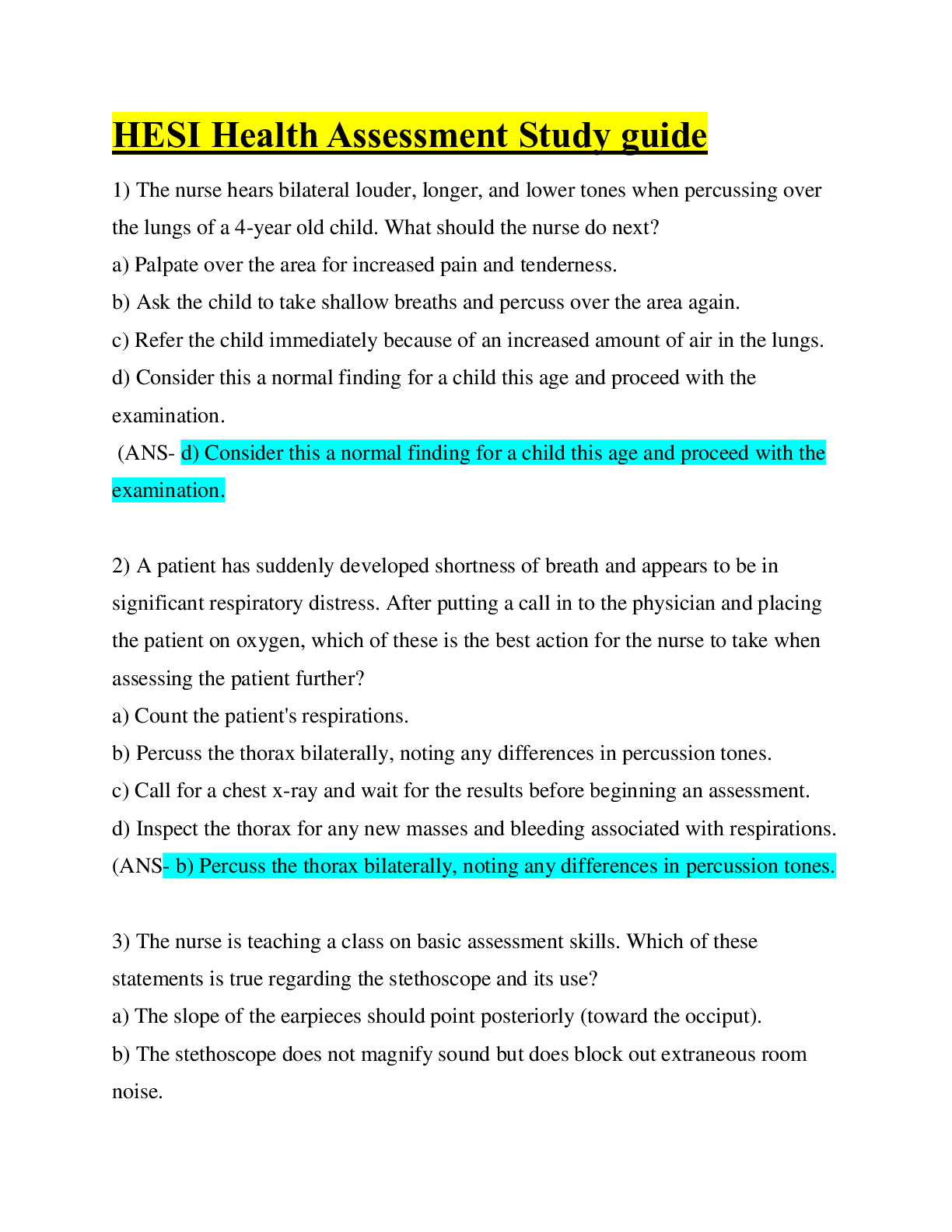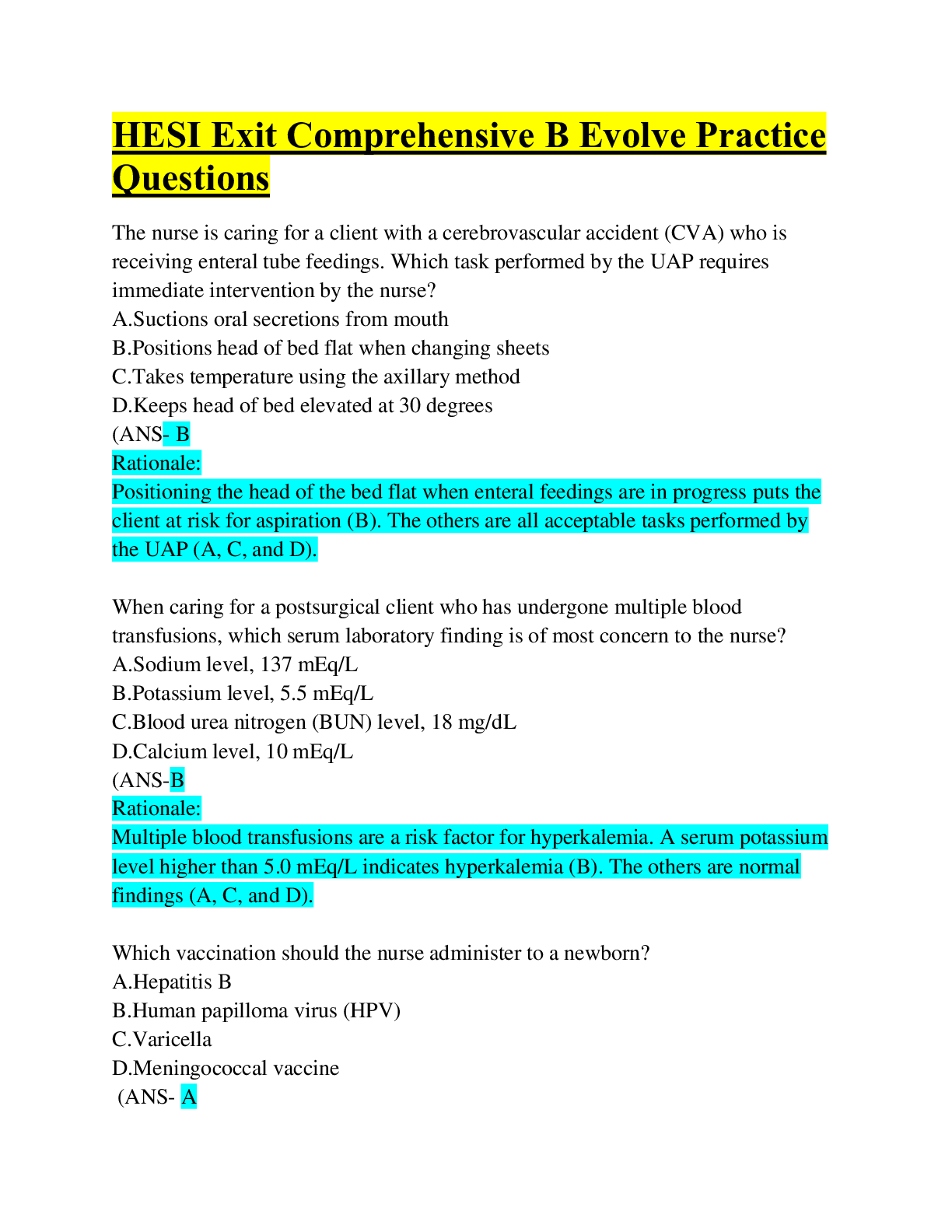Health Care > HESI > HESI A2 V1 Exam Reading Comprehensive With A&P (Latest Solutions) Q&A (All)
HESI A2 V1 Exam Reading Comprehensive With A&P (Latest Solutions) Q&A
Document Content and Description Below
Which statement is not listed as a detail in the passage? A. The oncoming sound waves have a higher pitch because of high frequency and closeness of waves. B. The oncoming sound waves have a higher p... itch because of low frequency and closeness of waves. C. The whistling sound of the locomotive as it approaches and passes can be explained by the Doppler effect. D. The high-pitched sound of the ambulance as it approaches and passes can be explained by the Doppler effect. 2. What is the main idea of the passage? A. Trains and ambulances make distinctly loud noises. B. Low-frequency waves make high-pitched sounds. C. High-frequency waves make low-pitched sounds. D. The Doppler Effect explains the rationale for why sound is heard initially more strongly and then faintly after a moving object has passed. 3. What is the meaning of the word phenomenon in the second paragraph? A. Something that is lifeless to the senses B. Something that is nonchalant C. Something that is significant but unusual D. Something that is chemical in origin 4. What is the author’s primary purpose in writing this essay? A. To entertain the reader with information about trains and ambulances B. To inform the reader about avoiding accidents, which involve trains and ambulances C. To inform the reader about how movement affects sound D. To analyze the difference between train and ambulance sounds 5. Which sound waves have a higher pitch? A. Those waves that are closer together B. Those waves that are farther apart C. Those waves that travel a long distance D. Those waves that travel a short distance 6. Which sound waves have a lower pitch? A. Those waves that are closer together B. Those waves that are farther apart C. Those waves that travel a long distance D. Those waves that travel a short distance Electrocardiogram Beep!…Beep!…Beep! is the audible rhythmic sound made as the strength of the heart muscle is measured. The signal cadence has a characteristic record that varies in every individual. This record is called an electrocardiogram, or ECG. In the body, an array of systemic neural responses constantly occur, emitting electric currents. The electric currents can be detected on the surface of the body, and if a person is hooked to an amplifier, these impulses are recorded by an electrocardiograph. Most of the information obtained is about the heart because the heart sends out electric currents in waves. This “wave of excitation” spreads through the heart wall and is accompanied by electric changes. The wave takes place in three distinct steps. Initially, the “wave of excitation” accompanied by an electric change lasts for approximately 1 to 2 seconds after the contraction of the cardiac muscle. The electric impulses are discharged [Show More]
Last updated: 2 years ago
Preview 1 out of 60 pages

Buy this document to get the full access instantly
Instant Download Access after purchase
Buy NowInstant download
We Accept:

Reviews( 0 )
$11.00
Can't find what you want? Try our AI powered Search
Document information
Connected school, study & course
About the document
Uploaded On
Mar 23, 2022
Number of pages
60
Written in
Additional information
This document has been written for:
Uploaded
Mar 23, 2022
Downloads
0
Views
80













